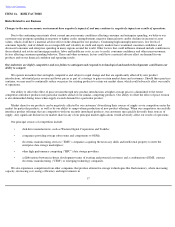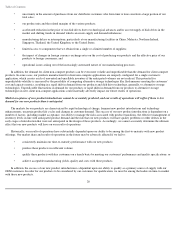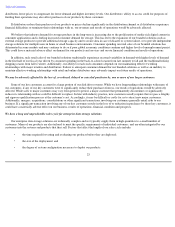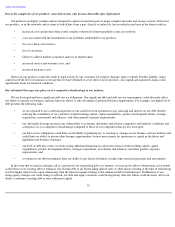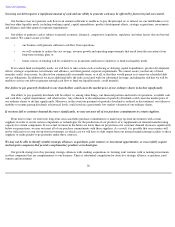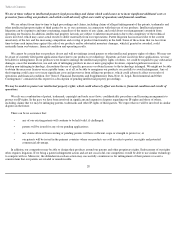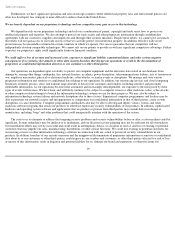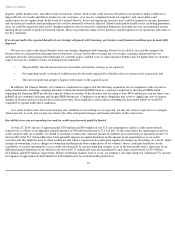Seagate 2013 Annual Report Download - page 29
Download and view the complete annual report
Please find page 29 of the 2013 Seagate annual report below. You can navigate through the pages in the report by either clicking on the pages listed below, or by using the keyword search tool below to find specific information within the annual report.
Table of Contents
Servicing our debt requires a significant amount of cash and our ability to generate cash may be affected by factors beyond our control.
Our business may not generate cash flow in an amount sufficient to enable us to pay the principal of, or interest on, our indebtedness or to
fund our other liquidity needs, including working capital, capital expenditures, product development efforts, strategic acquisitions, investments
and alliances and other general corporate requirements.
Our ability to generate cash is subject to general economic, financial, competitive, legislative, regulatory and other factors that are beyond
our control. We cannot assure you that:
• our business will generate sufficient cash flow from operations;
• we will continue to realize the cost savings, revenue growth and operating improvements that result from the execution of our
long-term strategic plan; or
• future sources of funding will be available to us in amounts sufficient to enable us to fund our liquidity needs.
If we cannot fund our liquidity needs, we will have to take actions such as reducing or delaying capital expenditures, product development
efforts, strategic acquisitions, investments and alliances, and other general corporate requirements. We cannot assure you that any of these
remedies could, if necessary, be effected on commercially reasonable terms, or at all, or that they would permit us to meet our scheduled debt
service obligations. In addition if we incur additional debt, the risks associated with our substantial leverage, including the risk that we will be
unable to service our debt or generate enough cash flow to fund our liquidity needs, could intensify.
Our failure to pay quarterly dividends to our shareholders could cause the market price of our ordinary shares to decline significantly.
Our ability to pay quarterly dividends will be subject to, among other things, our financial position and results of operations, available cash
and cash flow, capital requirements, and other factors. Any reduction or discontinuation of quarterly dividends could cause the market price of
our ordinary shares to decline significantly. Moreover, in the event our payment of quarterly dividends is reduced or discontinued, our failure or
inability to resume paying dividends at historical levels could result in a persistently low market valuation of our ordinary shares.
If revenues fall or customer demand decreases significantly, we may not meet all of our purchase commitments to certain suppliers.
From time to time, we enter into long-term, non-cancelable purchase commitments or make large up-front investments with certain
suppliers in order to secure certain components or technologies for the production of our products or to supplement our internal manufacturing
capacity for certain components. If our actual revenues in the future are lower than our projections or if customer demand decreases significantly
below our projections, we may not meet all of our purchase commitments with these suppliers. As a result, it is possible that our revenues will
not be sufficient to recoup our up-
front investments, in which case we will have to shift output from our internal manufacturing facilities to these
suppliers or make penalty-type payments under these contracts.
We may not be able to identify suitable strategic alliances, acquisitions, joint ventures or investment opportunities, or successfully acquire
and integrate companies that provide complementary products or technologies.
Our growth strategy involves pursuing strategic alliances with, making acquisitions of, forming joint ventures with or making investments
in other companies that are complementary to our business. There is substantial competition for attractive strategic alliance, acquisition, joint
venture and investment
26



